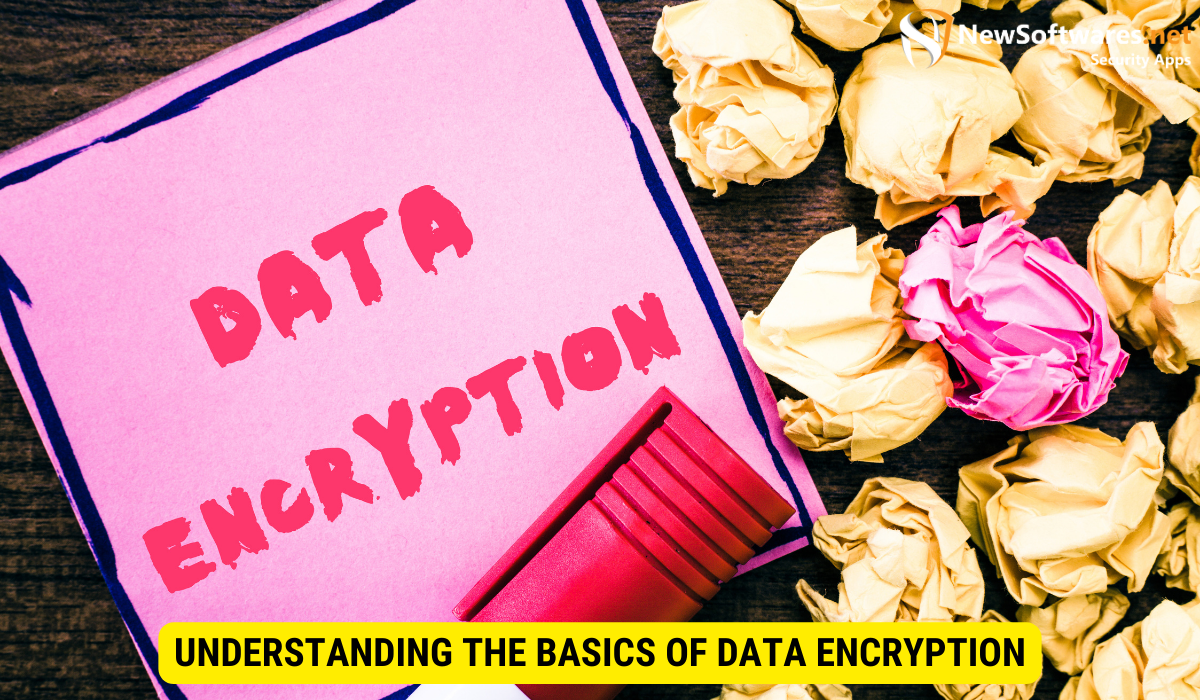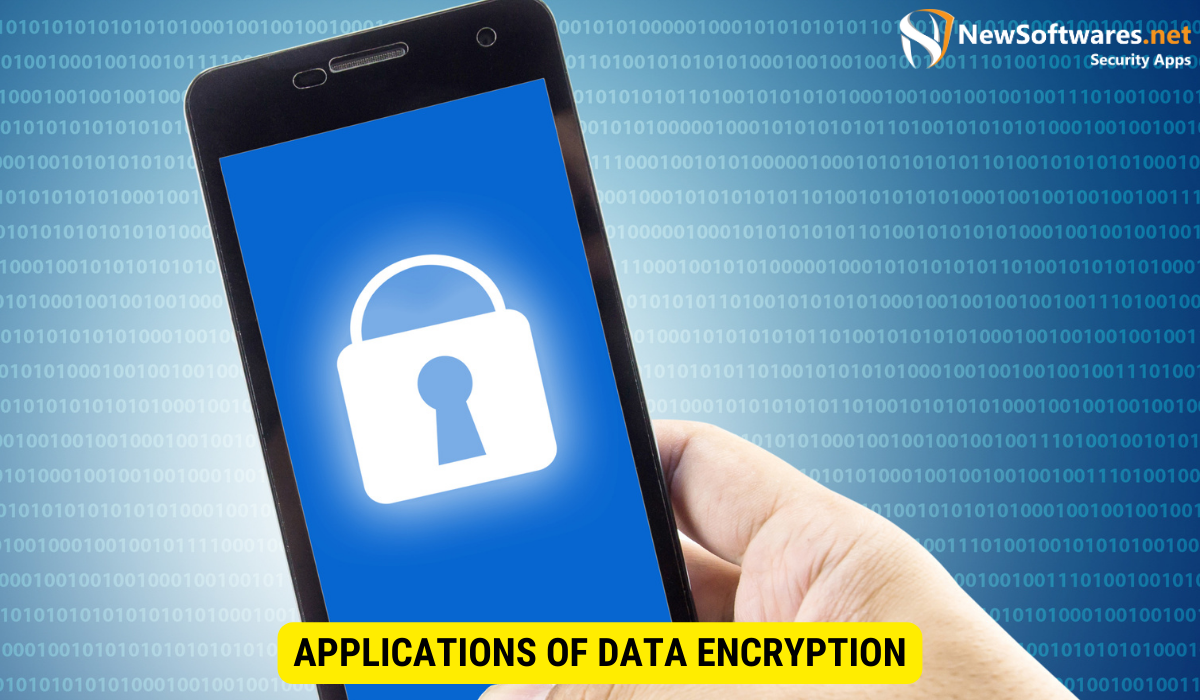Data encryption is the process of converting data into ciphertext using encryption algorithms and keys to ensure its security and privacy.
Data encryption plays a essential role in ensuring data security and privacy. In today’s digital age, where sensitive information is constantly being transferred and stored electronically, it is necessary to understand the basics of data encryption. By encrypting data, you can shield it from unauthorized access, keeping it safe from hackers and other malicious entities. Together, we will explore the fundamentals of data encryption, different types of encryption algorithms, the process of encryption and decryption, key elements involved, and various applications of data encryption in business and personal data protection.
Understanding the Basics of Data Encryption

Defining Data Encryption
Data encryption is the process of transforming data into a form that is unintelligible to unauthorized individuals. It involves the use of an encryption algorithm and an encryption key to transform plain text data into encrypted data, also known as ciphertext. Only individuals with the corresponding decryption key can decrypt the data and convert it back to its original form.
Data encryption has been around for centuries, with ancient civilizations using various techniques to protect sensitive information. For example, the ancient Greeks used a method called the Scytale, which involved wrapping a strip of parchment around a cylinder of a specific diameter and writing the message on the parchment. The message could only be deciphered by wrapping the parchment around a cylinder of the same diameter. This early form of encryption demonstrates the fundamental concept of transforming information into an unreadable format.
Modern data encryption techniques have evolved significantly, leveraging complex mathematical algorithms and advanced encryption keys. These algorithms are designed to make it computationally infeasible for unauthorized individuals to decrypt the data without the correct key. As technology advances, encryption methods continue to evolve to keep up with the increasing sophistication of cyber threats.
Importance of Data Encryption
Data encryption is essential for maintaining the confidentiality and integrity of sensitive information. It offers second layer of security, preventing illegal access and ensuring that data remains safe, even if it falls into the wrong hands. Encryption is particularly crucial when transmitting data over networks or storing data in the cloud, where data can be vulnerable to interception or breaches.
One of the most significant benefits of data encryption is its ability to protect personal and financial information. In today’s digital age, individuals rely heavily on online transactions, such as banking, shopping, and communication. Without encryption, sensitive data, such as credit card numbers and passwords, could be easily intercepted by hackers, leading to individuality theft and financial loss.
Also, data encryption plays a vital role in safeguarding sensitive corporate information. Businesses store vast amounts of confidential data, including trade secrets, customer information, and financial records. Encryption ensures that this data remains secure, even if an invader gains unauthorized access to the network or physical storage devices.
Compliance with data protection regulations is another reason why data encryption is crucial. Many countries have implemented harsh data protection laws that require organizations to protect personal information adequately. Failure to comply with these regulations can consequence in severe penalties and damage to a company’s reputation. By implementing robust encryption measures, organizations can demonstrate their commitment to data privacy and avoid legal and financial consequences.
In finale, data encryption is a critical component of modern information security. It provides a reliable and effective method of protecting sensitive data from unauthorized access. As technology continues to advance, encryption techniques will continue to evolve to meet the ever-growing challenge of data protection.
Types of Data Encryption
Data encryption is a critical aspect of modern-day communication and information security. It ensure that sensitive data remains protected and inaccessible to unauthorized individuals. There are various types of data encryption techniques, each with its own strengths and applications.
Symmetric Encryption
Symmetric encryption, also acknowledged as secret-key encryption, is one of the oldest and most widely used encryption methods. It involves using a single key for both the encryption and decryption processes. The same key is used to encrypt the data at the sender’s end and decrypt it at the receiver’s end.
This type of encryption is moderately fast and efficient, making it suitable for scenarios where speed is essential, such as real-time communication or large-scale data transfers. However, one of the main challenges with symmetric encryption is securely sharing the same key between the sender and the receiver. If the key falls into the wrong hands, the entire system’s security is compromised.
To address this issue, various key exchange protocols have been developed, such as the Diffie-Hellman key exchange and the RSA algorithm. These protocols allow the secure exchange of encryption keys without directly transmitting them over the communication channel.
Asymmetric Encryption
Asymmetric encryption is well-known as public key encryption. This is a more recent development in the field of cryptography. It uses a pair of keys: a public key and a private key. The public key is used for encrypting the data, while the private key is used for decrypting it.
Unlike symmetric encryption, the sender and receiver do not need to share the same key. The public key can be freely dispersed, allowing anyone to encrypt data using it. However, only the individual possessing the private key can decrypt the encrypted data.
This type of encryption offers several advantages over symmetric encryption. Firstly, it eliminates the need for secure key exchange, as the confidential key remains confidential and is not shared with anyone. Secondly, it enables digital signatures, which provide a way to verify the authenticity and integrity of the encrypted data.
Asymmetric encryption algorithms, such as RSA and Elliptic Curve Cryptography (ECC), are widely used in various applications, including secure email communication, digital transactions, and secure web browsing.
In conclusion, both symmetric and asymmetric encryption play vital roles in ensuring the security and privacy of sensitive data. While symmetric encryption offers speed and efficiency, asymmetric encryption provides a more secure and flexible solution. The choice of encryption method depends on the precise requirements of the application and the level of security needed.
How Data Encryption Works?
The Encryption Process
During encryption, the data is transformed from its original form into ciphertext using an encryption algorithm and an encryption key. The encryption algorithm manipulates the plain text data, scrambling it according to a specific mathematical formula. The encryption key serves as a sequence of bits that determines how the algorithm will transform the data. The resulting ciphertext appears as a random and meaningless series of characters, rendering it useless to unauthorized individuals.
The Decryption Process
The decryption process involves reversing the encryption process to convert the ciphertext back to its original form. The receiver possesses the decryption key, which is used in conjunction with an encryption algorithm to decrypt the data. The decryption algorithm effectively unravels the transformation applied during encryption, revealing the original plain text data.
Key Elements in Data Encryption
Encryption Keys
Encryption keys are a fundamental component of data encryption. They determine how the encryption algorithm will transform the data during encryption and how the decryption algorithm will reverse the transformation during decryption. The length and difficulty of the encryption keys directly affect the security and strength of the encryption process.
Algorithms and Protocols
Data encryption relies on algorithms and protocols to ensure the integrity and efficiency of the encryption process. Encryption algorithms specify the exact mathematical operations that manipulate the data during encryption and decryption. Protocols, such as (SSL) Secure Sockets Layer and Transport Layer Security (TLS), provide secure communication channels for transmitting encrypted data over networks.
Applications of Data Encryption

Data Encryption in Business
Data encryption is widely used in various business sectors to protect sensitive information, such as financial records, customer data, and intellectual property. Encryption safeguards against data breaches, unauthorized access, and identity theft. It also ensures compliance with regulations, Like the EU’s General Data Protection Regulation & the Health Insurance Portability and Accountability Act in the medical care industry.
Personal Data Protection
Data encryption is equally important for personal data protection. As individuals increasingly store personal information on devices and in the cloud, encryption ensures that this data remains confidential and secure. Encryption safeguards sensitive data, such as financial information, personal communications, and login credentials, protecting against identity theft and unauthorized access.
Key Takeaways
- Data encryption transforms data into an unintelligible form, ensuring its security and privacy.
- There are two major types of data encryption: symmetric encryption and asymmetric encryption.
- The encryption process converts plain text data into ciphertext using an encryption algorithm & an encryption key.
- The decryption process reverses the encryption process, converting ciphertext back to its original form using a decryption key.
- Data encryption is used extensively in business and personal settings for protecting sensitive information and ensuring compliance with regulations.
FAQs
What is the difference between symmetric encryption and asymmetric encryption?
Symmetric encryption uses a single key shared between the sender and receiver for both encryption and decryption. Asymmetric encryption, on the other hand, uses a duo of keys: a public key for encryption and a private key for decryption.
Can encrypted data be decrypted?
Encrypted data can be decrypted if the receiver possesses the correct decryption key. Without the proper key, decryption is practically impossible.
Is data encrypted during transmission over the internet?
Data can be encrypted during transmission over the internet using secure protocols like SSL and TLS. Encryption ensure that data remains secure and private when being transferred between devices and across networks.
Can encrypted data be hacked?
While it is theoretically possible to hack encrypted data, modern encryption algorithms are designed to be extremely secure. The strength of encryption depends on factors such as the length of the encryption key and the complexity of the algorithm.
How does data encryption help with compliance?
Data encryption helps organizations comply with regulations regarding the protection of sensitive data. Encryption ensures that data is secure and classified, reducing the threat of data breaches and regulatory penalties.
Conclusion
Data encryption is an essential tool for safeguarding sensitive information and ensuring data security in various contexts, including business and personal settings. By understanding the basics of data encryption, different types of encryption algorithms, the encryption and decryption processes, and the key elements involved, individuals and organizations can protect their data from unauthorized access and potential breaches. Encryption’s role in securing data transmission over networks and complying with regulations adds an additional layer of trust and confidence in today’s digital landscape. Prioritizing data encryption is key to safeguarding your valuable information.
